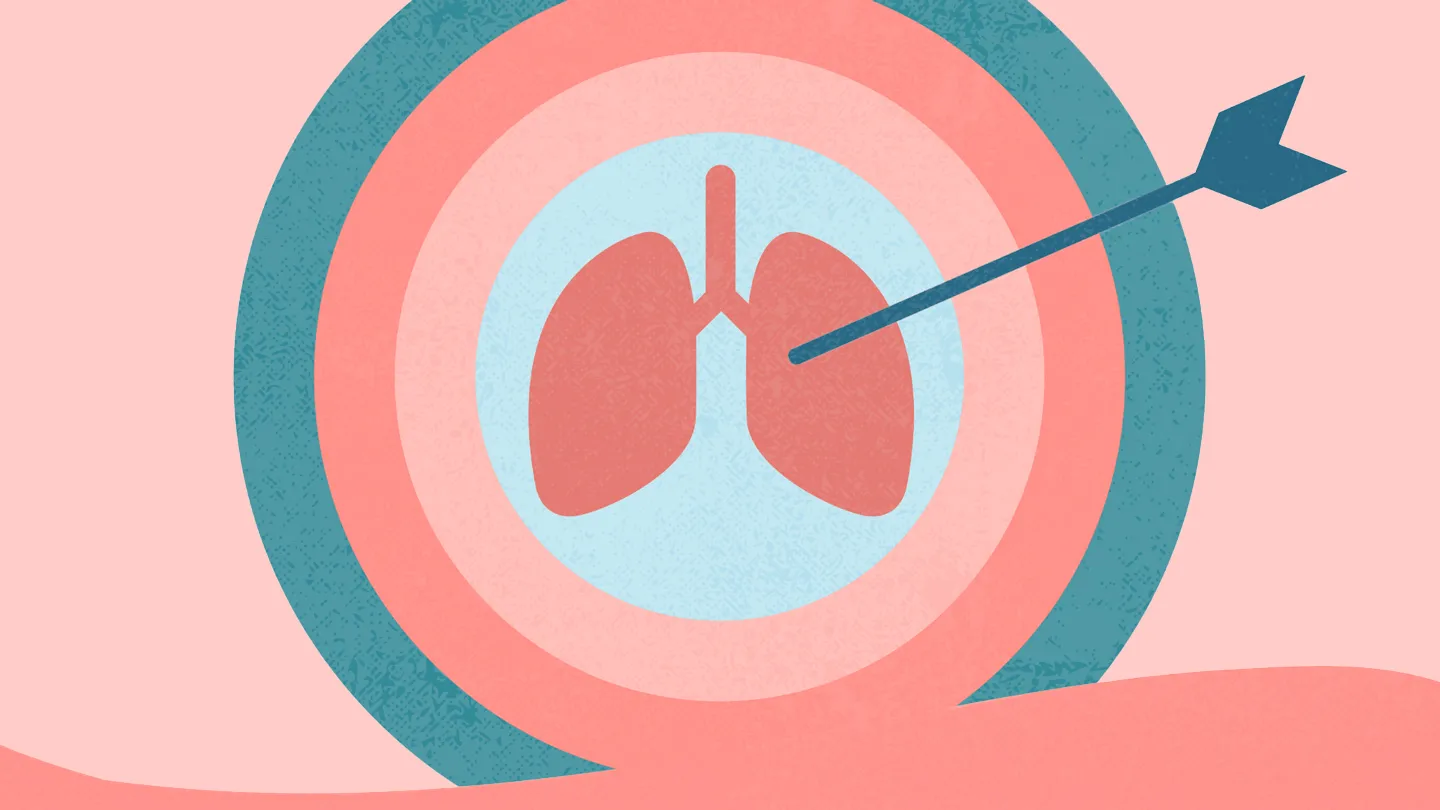One of the most exciting advances in the treatment of metastatic non-small cell lung cancer (NSCLC) is the development of drugs that target specific changes, or mutations, that occur inside cells when they become cancerous.
These targeted therapies can often identify and attack cancer cells more effectively than conventional chemotherapy — and usually with fewer side effects.
Here’s what you need to know about this promising advancement in cancer medicine.
1. NSCLC Targeted Therapies Are More Precise Than Standard Chemo
“Traditional chemotherapy is designed to kill any rapidly dividing cells, which tend to be cancer cells. But because they don’t have a specific target, they kill healthy cells as well,” says Edward Garon, MD, director of the thoracic oncology program at UCLA Jonsson Comprehensive Cancer Center in Los Angeles.
Targeted drugs, on the other hand, take aim at the cancer cells’ faulty genetic programming, which is what makes them different from normal cells. Doctors are learning more about specific mutations in the DNA of NSCLC cells that drive the cancer. Precision therapies like checkpoint inhibitor immunotherapy and drugs that target specific mutations, such as KRAS and EGFR mutations, have improved outcomes for people with NSCLC.
“These mutations make proteins that send signals that lead to the development and maintenance of the cancer,” says Dr. Garon. Targeted therapies take aim at these proteins directly to stop the cancer from spreading.
2. Not All Metastatic NSCLC Is Treated the Same
Doctors once thought NSCLC was one disease. They now understand that NSCLC can be parsed into different genetic or driver mutations that dictate the tumor’s behavior. This has led to the development of more personalized cancer medicine.
“While we’re not yet at the point where we have a different drug for every single patient, we do have medicines for groups of individuals who share the same mutation in their lung cancer cells,” Garon explains.
The most common NSCLC mutation that can be treated with a targeted therapy is KRAS, specifically KRAS g12c, which is an error in proteins in normal cells. KRAS normally acts as an information hub for signals in a cell that lead to cell growth. But when there is a mutation in KRAS, it leads to too much signaling and cell growth, which causes cancer.
KRAS tends to occur more in current or former smokers, as well as in people of western European descent. But these mutations have also been detected in people of all backgrounds.
Another common mutation in NSCLC that is treatable with targeted therapy is an abnormality in EGFR, a protein that helps cells grow and divide. The mutation is more well known than KRAS, because EGFR was discovered much earlier, and we have different medications to target it.
In NSCLC cells with the EGFR mutation, the signal is always on, causing these cells to grow faster. Targeted therapies called EGFR inhibitors help block this signal. An EGFR mutation with lung cancer is commonly seen in people who have a history of smoking very little or not at all.
The U.S. Food and Drug Administration (FDA) has also approved therapies for people who have a mutation in the ALK, BRAF, HER2, MET, NRG1, NTRK, RET, or ROS1 genes. These pills can be taken orally at home.
3. NSCLC Targeted Therapies Are Less Likely Than Chemo to Cause Broad Side Effects
Because targeted therapies don’t kill healthy cells, many targeted therapies are less likely to cause side effects such as hair loss, nausea, and others that are associated with chemotherapy.
“These drugs have been quite well tolerated and tend to cause fewer and less-severe side effects than traditional chemotherapy,” says Garon.
4. But They Do Cause Some Side Effects
“As with any drug, there can be toxicities,” Garon notes. Those will depend on the type and dose of drug you take and your overall health, but the most common side effects are a skin rash and gastrointestinal problems.
Other side effects can include fatigue, flu-like symptoms, sore mouth, headache, loss of appetite, swelling in the hands and feet, taste changes, and sleep problems.
Your healthcare team can help you manage any side effects you experience during treatment.
5. NSCLC Targeted Drugs Aren’t for Everyone
According to Garon, not every genetic mutation currently has an FDA-approved targeted medication. “In addition to approved therapies, however, there are other mutations in non-small cell lung cancer for which there are drugs showing real promise in clinical trials.”
Approximately 50 percent of patients with advanced NSCLC have a DNA mutation that is primarily responsible for causing the cancer. That means the mutation can be identified by genomic testing and treated with targeted therapies.
As the available targets increase, so will the percentage of people with advanced NSCLC who are candidates for this type of treatment.
6. You Need to Be Tested to Know if NSCLC Targeted Therapy Is an Option for You
While genetic testing is considered the standard of care for metastatic NSCLC, it’s worth asking your doctor not only if you are being tested, but also exactly which mutations you are being tested for, Garon stresses.
“You want to make sure you’re being tested for mutations that have FDA-approved therapies, but also for mutations that may not have approved therapies yet, but do have drugs showing promise in clinical trials,” he says.
Comprehensive genetic testing will help you and your doctor determine all your possible treatment options.
7. Targeted Drugs Can Be Expensive
The cost of targeted therapy depends on the drug, but newer treatments tend to be more expensive than medicines that have been used for many years.
Health insurance typically covers at least some of the cost, but each plan is different. Yours may cover targeted oral drugs under your prescription drug benefit, rather than your chemotherapy benefit, which may mean paying more out of pocket than you would for intravenous drugs given in a hospital or clinic.
Before you start treatment, find out how much your insurance company will pay for any targeted drug you’d take. If you need help covering the cost, ask your healthcare team about getting help from the drug company or applying for a copay or prescription drug assistance program.
8. You May Still Need Other Treatments
People with an EGFR or ALK mutation generally get targeted therapy as a first-line treatment. “Patients with other types of mutations sometimes go with chemotherapy-based approaches initially, then move to a targeted therapy,” says Garon.
Even if you start treatment with a targeted therapy alone, you may need to add other types of treatment at some point in your cancer journey. “Over time, the lung cancer cells may develop a way of continuing to grow, despite the drug, and the therapy is no longer effective,” Garon explains. How long that takes to happen can vary significantly, from several months to several years. When a targeted treatment is no longer effective, which is a common occurrence, you may need to have chemotherapy, immunotherapy, or a combination of the two.
Clinical trials are also an option – speak to your doctor to learn more about which trials you might be eligible for, or search ClinicalTrials.gov.
Read the full article here




